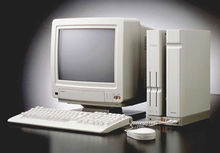Difference between revisions of "Sharp X68000 emulators"
Jump to navigation
Jump to search
m (→Emulators: I tested Akumajou Dracula, and it worked perfectly, but that's the full extent of my testing. No idea whether to recommend it or not.) |
m (→Comparisons: You can just hit F12 to load multidisc games) |
||
| Line 49: | Line 49: | ||
* [[MAME]]'s X68000 core is, in terms of playability, still in a very early stage of development and should only be used if the debugging features of Pro-68k are lacking. | * [[MAME]]'s X68000 core is, in terms of playability, still in a very early stage of development and should only be used if the debugging features of Pro-68k are lacking. | ||
* XM6i is built largely around being able to run NetBSD/X68k. While it can run games, it is clear that this is not what XM6i is focused on. | * XM6i is built largely around being able to run NetBSD/X68k. While it can run games, it is clear that this is not what XM6i is focused on. | ||
| − | * px68k is an open source fork of the c68k emulator. px68k has a libretro core | + | * px68k is an open source fork of the c68k emulator. px68k has a libretro core. |
[[Category:Computers]] | [[Category:Computers]] | ||
Revision as of 07:29, 17 May 2017
The X68000 (エックスろくまんはっせん Ekkusu Rokuman Hassen?) is a home computer created by Sharp, first released in 1987, sold only in Japan.
The first model featured a 10 MHz Motorola 68000 CPU (hence the name), 1 MiB of RAM, and no hard drive; the last model was released in 1993 with a 25 MHz Motorola 68030 CPU, 4 MiB of RAM, and optional 80 MB SCSI hard drive. RAM in these systems is expandable to 12 MiB, though most games and applications did not require more than two.
Emulators
| Name | Operating System(s) | Latest Version | Active | Recommended |
|---|---|---|---|---|
| XM6 Pro-68k | Windows | 140316 | ? | ✓ |
| XM6 TypeG | Windows | 3.21 | ✓ | ✓ |
| MAME | Multi-platform | 0.264 | ✓ | ✗ |
| XM6i | Multi-platform | 0.53 | ✓ | ? |
| px68k | Multi-platform | 0.15 | ✓ | ? |
Comparisons
- XM6 Pro-68k was, at the time, the only English interface, focused on providing necessary debugging features and has decent compatibility. It has since been succeeded by TypeG in most regards.
- XM6 TypeG is going to be your best bet in terms of accuracy; can run in X68030 mode, good peripheral/expansion support and will run just about any game you throw at it.
- MAME's X68000 core is, in terms of playability, still in a very early stage of development and should only be used if the debugging features of Pro-68k are lacking.
- XM6i is built largely around being able to run NetBSD/X68k. While it can run games, it is clear that this is not what XM6i is focused on.
- px68k is an open source fork of the c68k emulator. px68k has a libretro core.
